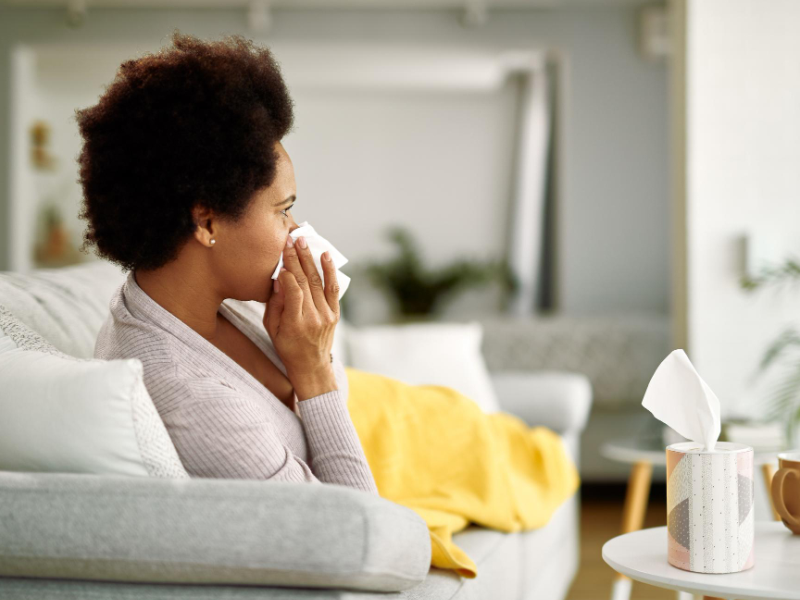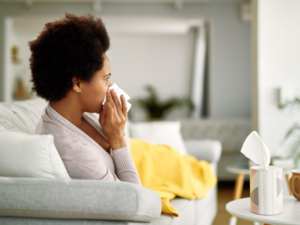
Introduction:
While concerns about air pollution often focus on outdoor environments, it is crucial not to overlook the hazards posed by indoor air pollution.
In fact, the air inside our homes can be significantly more polluted than the air outside. Indoor air pollution can arise from various sources and have detrimental effects on our health and well-being.
This article aims to shed light on indoor air pollution within households, its sources, and its impact on human health, while providing practical solutions to improve indoor air quality.
Sources of Indoor Air Pollution:
Indoor air pollution can originate from several sources within households.
Combustion sources such as tobacco smoke, wood-burning stoves, fireplaces, gas stoves, and unventilated space heaters release harmful pollutants into the air.
Building materials and furnishings can also contribute to indoor air pollution through the emission of volatile organic compounds (VOCs) from paints, varnishes, solvents, and formaldehyde from furniture, carpets, and laminates.
Household cleaning and personal care products: additionally, certain household cleaning and personal care products, including aerosol sprays, air fresheners, cleaning agents containing harsh chemicals, and perfumes, can introduce pollutants into the indoor environment. Biological contaminants such as mold, dust mites, pet dander, and pollen can also contribute to poor indoor air quality.
Health Impacts of Indoor Air Pollution:
Health Impacts on Women and Children
Women and children are particularly vulnerable to the adverse effects of indoor air pollution due to several factors. Firstly, women often spend more time indoors, especially in developing countries where cultural roles may assign them to household chores such as cooking and cleaning.
This increased exposure to indoor pollutants, particularly from cooking with solid fuels like biomass or coal, significantly impacts their health. The combustion of these fuels releases high levels of particulate matter and other harmful gases, leading to respiratory problems, cardiovascular diseases, and adverse birth outcomes.
Moreover, pregnant women and young children are especially at risk. Exposure to indoor air pollution during pregnancy can have severe consequences for both the mother and the developing fetus. It can increase the risk of low birth weight, preterm birth, and developmental issues in children.
Similarly, young children have developing immune systems and respiratory systems that are more susceptible to the harmful effects of pollutants. They are also more likely to crawl and play on the floor, which increases their exposure to pollutants settled in dust.
Exposure to indoor air pollution can have significant health effects such as.
Respiratory issues are a common outcome, with individuals experiencing aggravated asthma symptoms, an increased risk of respiratory infections, chronic bronchitis, and persistent coughing and wheezing.
Allergies and skin irritation can also arise, leading to allergic reactions, skin rashes, itchy or watery eyes, and nasal congestion.
Cardiovascular problems: Indoor air pollution has been linked to cardiovascular problems, including an increased risk of heart disease, elevated blood pressure, and stroke. Long-term exposure to indoor air pollutants can contribute to developmental issues in children, respiratory and lung diseases, and even certain types of cancer due to exposure to carcinogens.
Improving Indoor Air Quality:
Enhancing indoor air quality is essential for maintaining a healthy living environment. Here are some practical solutions to improve indoor air quality:
Ventilation:
Adequate ventilation is crucial for reducing indoor air pollution. Open windows and doors to allow for fresh air circulation. Use exhaust fans in kitchens and bathrooms to remove pollutants and excess moisture. Installing air purifiers with high-efficiency particulate air (HEPA) filters can also help remove airborne contaminants.
Source Control:
Take steps to minimize and control pollution sources. Avoid smoking indoors and encourage a smoke-free environment. Choose natural or low-VOC paints and cleaning products to reduce emissions of harmful chemicals. Regularly clean and vacuum to reduce dust and allergens. Address mold and moisture issues promptly to prevent the growth of harmful molds.
Indoor Plants:
Certain houseplants have air-purifying properties and can help improve indoor air quality. Consider incorporating plants such as Aloe Vera, Snake Plant, and Spider Plant, which are known for their ability to absorb toxins and release oxygen.
Monitoring:
Utilize indoor air quality monitors to measure pollutant levels and take necessary actions accordingly. These monitors can provide real-time information about indoor air quality, allowing you to identify potential issues and take proactive steps to mitigate them.
Air purifiers:
Air purifiers like are highly effective at neutralizing all forms of micro-organism, toxins and harmful chemical compounds from your indoor space.Using air purifiers at home ensure a constant filtration and purification of indoor air, leaving no room for microorganisms to thrive in your home. For instance, RANDS Ltd. are official partners with Unimech Healthcare, India’s leading provider of Safe & Smart air & surface purification solutions.
They offer a wide range of air purifiers for several applications including air purifying devices for homes, offices, school, halls, etc. Their air purifiers offer 99.9% protection against fungi, viruses, molds and allergens. What’s more? They are completely free of side effect. For more information on how you can get an Air purifier for your home or office click here.
Conclusion:
Indoor air pollution poses significant risks to our health, as we spend a considerable amount of time within the confines of our homes. Understanding the sources of indoor air pollution and its health impacts empowers us to take proactive measures to enhance indoor air quality.





